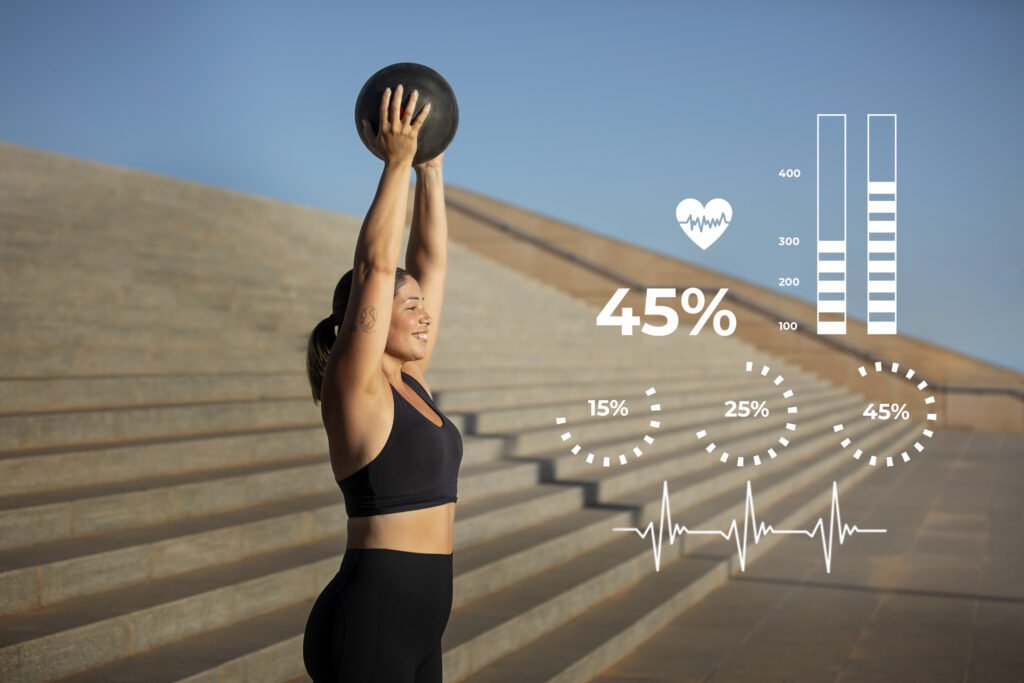Health Fit Living Tips with Expert Fitness and Diet Ideas
Welcome to your ultimate guide for health fit living, packed with expert fitness and diet ideas to help you achieve a vibrant, balanced lifestyle. This SEO-optimized blog post offers practical, science-backed tips to enhance your physical and mental well-being. Whether you’re a beginner or a seasoned wellness enthusiast, these strategies will empower you to live healthier, feel stronger, and stay energized. Let’s dive into the expert advice that will transform your daily routine!
Why Health Fit Living Matters
Health fit living is about more than just looking good—it’s about feeling great, boosting energy, and building sustainable habits. By combining expert fitness routines with smart dietary choices, you can improve longevity, mental clarity, and overall vitality. This guide provides actionable ideas to make wellness accessible and enjoyable, ensuring you stay motivated on your journey.
Benefits of a Health Fit Lifestyle
- Enhanced energy and productivity
- Improved mood and mental focus
- Stronger muscles, bones, and joints
- Better weight management and body confidence
- Reduced risk of chronic diseases
Let’s explore expert fitness and diet ideas to help you thrive.
Expert Fitness Tips for Every Lifestyle Health Fit

Fitness is a cornerstone of Health Fit living, and these expert tips cater to all levels, from beginners to advanced. Incorporate these strategies into your routine to build strength, endurance, and flexibility.
1. Create a Balanced Workout Plan Health Fit
Expert Tip: Design a weekly routine that includes cardio, strength training, and flexibility exercises. Aim for at least 150 minutes of moderate aerobic activity or 75 minutes of vigorous activity per week, plus 2-3 strength sessions.
- Why it works: A balanced plan targets all aspects of fitness—cardiovascular health, muscle strength, and mobility—reducing injury risk and boosting performance.
- How to do it: Schedule 3 cardio sessions (e.g., running, cycling, or swimming), 2 strength workouts (e.g., bodyweight exercises or weights), and 1-2 flexibility sessions (e.g., yoga or stretching). For example:
- Monday: 30-min brisk walk (cardio)
- Tuesday: Bodyweight circuit (strength)
- Wednesday: Yoga (flexibility)
- Thursday: HIIT workout (cardio)
- Friday: Dumbbell workout (strength)
- Saturday: Rest or light walk
- Sunday: Stretching session
- Pro Tip: Use fitness apps or wearable devices to track progress and stay motivated.
2. Embrace High-Intensity Interval Training (HIIT)
Expert Tip: Incorporate HIIT workouts 1-2 times per week for maximum efficiency. Alternate 30 seconds of intense exercise (e.g., sprinting, burpees) with 30 seconds of rest for 15-20 minutes.
- Why it works: HIIT burns calories, improves heart health, and boosts metabolism in less time than traditional cardio.
- How to do it: Try a simple HIIT routine:
- Warm-up: 5 minutes of jogging
- Circuit: 30 seconds of jump squats, 30 seconds rest; 30 seconds push-ups, 30 seconds rest; repeat 6-8 times
- Cool-down: 5 minutes of stretching
- Pro Tip: Follow online HIIT videos for guided sessions tailored to your level.
3. Prioritize Functional Fitness Health Fit
Expert Tip: Focus on exercises that mimic daily movements, like squats, lunges, and planks, to improve strength and mobility for real-life activities.
- Why it works: Functional fitness enhances balance, coordination, and injury prevention, making daily tasks easier.
- How to do it: Perform a 20-minute circuit:
- Squats (3 sets of 12)
- Lunges (3 sets of 10 per leg)
- Plank (3 sets of 30 seconds)
- Deadlifts with light weights (3 sets of 12)
- Pro Tip: Use household items like water jugs as weights if you don’t have equipment.
4. Stay Consistent with Active Recovery
Expert Tip: Include active recovery days with low-intensity activities like walking, swimming, or foam rolling to aid muscle repair.
- Why it works: Active recovery boosts blood flow, reduces soreness, and maintains mobility without overexertion.
- How to do it: Dedicate 1-2 days per week to 20-30 minutes of gentle movement, such as a leisurely walk or yoga flow.
- Pro Tip: Pair recovery with deep breathing to enhance relaxation.
5. Track Progress and Set Goals, Health Fit
Expert Tip: Set specific, measurable goals (e.g., “Run 5K in 30 minutes” or “Do 10 push-ups”) and track your progress weekly.
- Why it works: Goal-setting keeps you motivated, and tracking progress shows tangible results, boosting confidence.
- How to do it: Use a journal or app to log workouts, noting improvements in reps, weight, or endurance. Reassess goals every 4-6 weeks.
- Pro Tip: Celebrate small wins, like increasing your plank time by 10 seconds, to stay inspired.
Expert Diet Ideas for Optimal Health Fit
Nutrition fuels your fitness efforts and supports overall wellness. These expert diet ideas focus on whole foods, balance, and sustainability to keep you energized and healthy.
1. Build Meals Around Whole Foods Health Fit
Expert Tip: Center your diet on minimally processed foods like vegetables, fruits, lean proteins, whole grains, and healthy fats.
- Why it works: Whole foods provide essential nutrients, fiber, and antioxidants, supporting energy, digestion, and immunity.
- How to do it: Aim for a plate that’s 50% vegetables, 25% lean protein (e.g., chicken, fish, tofu), and 25% complex carbs (e.g., quinoa, sweet potato). Include healthy fats like avocado or nuts in moderation.
- Pro Tip: Shop the perimeter of the grocery store, where fresh produce and proteins are typically found.
2. Master Portion Control
Expert Tip: Use visual cues to manage portions: a palm-sized portion of protein, a fist-sized portion of veggies, a cupped hand for carbs, and a thumb-sized portion of fats.
- Why it works: Portion control prevents overeating while ensuring balanced nutrient intake.
- How to do it: For example, a balanced lunch might include:
- 4 oz grilled chicken (protein)
- 1 cup steamed broccoli (veggies)
- 1/2 cup brown rice (carbs)
- 1 tbsp olive oil dressing (fat)
- Pro Tip: Use smaller plates to naturally reduce portion sizes without feeling deprived.
3. Time Your Meals for Energy
Expert Tip: Eat every 3-4 hours to maintain energy and stabilize blood sugar. Include protein and fiber in every meal or snack.
- Why it works: Regular meals prevent energy crashes and curb cravings, supporting workout performance and recovery.
- How to do it: Plan 3 meals and 1-2 snacks daily. Example schedule:
- 7 AM: Breakfast (oatmeal with berries and nuts)
- 10 AM: Snack (Greek yogurt with granola)
- 1 PM: Lunch (grilled salmon with quinoa and veggies)
- 4 PM: Snack (apple with almond butter)
- 7 PM: Dinner (turkey wrap with salad)
- Pro Tip: Prep snacks in advance to avoid reaching for processed foods.
4. Hydrate Strategically Health Fit
Expert Tip: Drink 2-3 liters of water daily, adjusting for activity level and climate. Add electrolytes during intense workouts.
- Why it works: Hydration supports muscle function, digestion, and mental focus. Electrolytes (sodium, potassium) aid recovery during sweat-heavy sessions.
- How to do it: Sip water throughout the day, aiming for clear or pale yellow urine as a hydration indicator. Try coconut water or an electrolyte tablet post-workout.
- Pro Tip: Infuse water with citrus or herbs for flavor without added sugar.
5. Incorporate Superfoods
Expert Tip: Add nutrient-dense superfoods like chia seeds, kale, berries, and salmon to your diet for a health boost.
- Why it works: Superfoods are rich in vitamins, minerals, and antioxidants, supporting immunity and recovery.
- How to do it: Sprinkle chia seeds on yogurt, add kale to smoothies, snack on berries, or bake salmon for dinner.
- Pro Tip: Rotate superfoods weekly to ensure a variety of nutrients.
Sample 7-Day Fitness and Diet Plan Health Fit

To bring these tips together, here’s a 7-day plan combining expert fitness and diet ideas. Adjust portions and exercises based on your needs and preferences.
Day 1: Kickstart with Cardio and Protein
- Fitness: 30-min brisk walk or jog (cardio).
- Breakfast: Greek yogurt (1 cup) with berries (1 cup) and chia seeds (1 tbsp).
- Snack: Handful of almonds (1 oz).
- Lunch: Grilled chicken (4 oz) with quinoa (1/2 cup) and steamed broccoli (1 cup).
- Snack: Hard-boiled egg and baby carrots.
- Dinner: Baked salmon (4 oz) with sweet potato (1 medium) and a side salad.
- Calories: ~1,800-2,000.
Day 2: Strength and Plant-Based Focus Health Fit
- Fitness: Bodyweight circuit (3 sets of 12 squats, 10 push-ups, 30-sec plank).
- Breakfast: Smoothie with spinach, banana, protein powder, and oats (1/4 cup).
- Snack: Hummus (1/4 cup) with veggie sticks.
- Lunch: Lentil salad (1.5 cups) with a whole-grain roll.
- Snack: Edamame (1 cup).
- Dinner: Tofu stir-fry (4 oz) with mixed veggies and brown rice (1/2 cup).
- Calories: ~1,700-1,900.
Day 3: Flexibility and Balanced Meals
- Fitness: 20-min yoga flow (flexibility).
- Breakfast: Whole-grain toast (2 slices) with avocado (1/2) and scrambled eggs (2).
- Snack: Greek yogurt (3/4 cup) with granola (2 tbsp).
- Lunch: Turkey wrap (3 oz turkey, spinach, hummus) with fruit.
- Snack: Protein shake with whey protein and berries.
- Dinner: Grilled shrimp (4 oz) with roasted asparagus and couscous (1/2 cup).
- Calories: ~1,800-2,000.
Day 4: HIIT and Low-Carb Health Fit
- Fitness: 15-min HIIT (jump squats, push-ups, burpees).
- Breakfast: Spinach and mushroom omelet (2 eggs) with berries (1 cup).
- Snack: Celery with cream cheese (2 tbsp).
- Lunch: Grilled chicken salad (4 oz chicken, mixed greens, avocado).
- Snack: Pistachios (1 oz).
- Dinner: Baked cod (4 oz) with zucchini noodles and marinara (1/2 cup).
- Calories: ~1,600-1,800.
Day 5: Strength and Carb Reload
- Fitness: Dumbbell workout (3 sets of 12 deadlifts, 10 bicep curls, 12 lunges).
- Breakfast: Oatmeal (1/2 cup dry) with almond milk, banana, and walnuts.
- Snack: Rice cake with peanut butter and strawberries.
- Lunch: Grilled steak (4 oz) with roasted sweet potato (1 cup) and green beans.
- Snack: Cottage cheese (1/2 cup) with pineapple.
- Dinner: Whole-grain pasta (1 cup) with turkey meatballs (4 oz) and spinach.
- Calories: ~1,900-2,100.
Day 6: Active Recovery and Mediterranean
- Fitness: 20-min light walk or stretching.
- Breakfast: Greek yogurt parfait with granola (2 tbsp) and blueberries.
- Snack: Olives (10) and cherry tomatoes.
- Lunch: Falafel wrap (3 falafels, tahini, lettuce, tomato).
- Snack: Edamame (1 cup).
- Dinner: Grilled lamb chops (4 oz) with roasted eggplant and tabbouleh (1/2 cup).
- Calories: ~1,800-2,000.
Day 7: Rest and Reset
- Fitness: 15-min foam rolling or gentle stretching.
- Breakfast: Chia pudding (1/4 cup chia seeds, almond milk, mango).
- Snack: Mixed nuts (1 oz).
- Lunch: Tuna salad (4 oz tuna, mixed greens, cucumber) with a whole-grain roll.
- Snack: Sliced pear with goat cheese (1 oz).
- Dinner: Grilled chicken (4 oz) with roasted Brussels sprouts and wild rice (1/2 cup).
- Calories: ~1,700-1,900.
Additional Tips for Health Fit Living
1. Practice Mindfulness
Incorporate 10 minutes of meditation or journaling daily to reduce stress and improve focus. Apps like Headspace or Calm can guide beginners.
2. Build a Support System
Join a fitness community or enlist a workout buddy to stay accountable. Share your goals on platforms like x.com to connect with others.
3. Adapt for Your Lifestyle Health Fit
If you’re busy, opt for short, high-intensity workouts or meal-prep on weekends. Tailor the plan to fit your schedule and preferences.
4. Monitor and Adjust
Track energy levels, sleep quality, and fitness progress. Adjust workouts or meals every 4-6 weeks to align with your evolving goals.
FAQs About Health Fit Living
How do I start if I’m new to fitness?
Begin with 15-20 minute workouts 3 times per week and simple meals focused on whole foods. Gradually increase intensity and duration.
Can I follow this plan with dietary restrictions?
Yes, swap ingredients to fit your needs (e.g., gluten-free grains, plant-based proteins). Consult a dietitian for personalized advice.
How do I stay motivated long-term?
Set small, achievable goals, track progress, and reward yourself for milestones. Variety in workouts and meals prevents boredom.
Do I need supplements?
Whole foods should be your primary nutrient source. If needed, consider a multivitamin or omega-3 after consulting a healthcare professional.
Conclusion
Health fit living is about creating a sustainable, enjoyable routine that supports your body and mind. With these expert fitness and diet ideas, you’re equipped to build strength, boost energy, and thrive every day. Start with small steps, stay consistent, and embrace the journey to a healthier you. For more inspiration, visit x.ai/grok for personalized tips or explore help.x.com for community support. Share your progress and inspire others to live their best lives!
